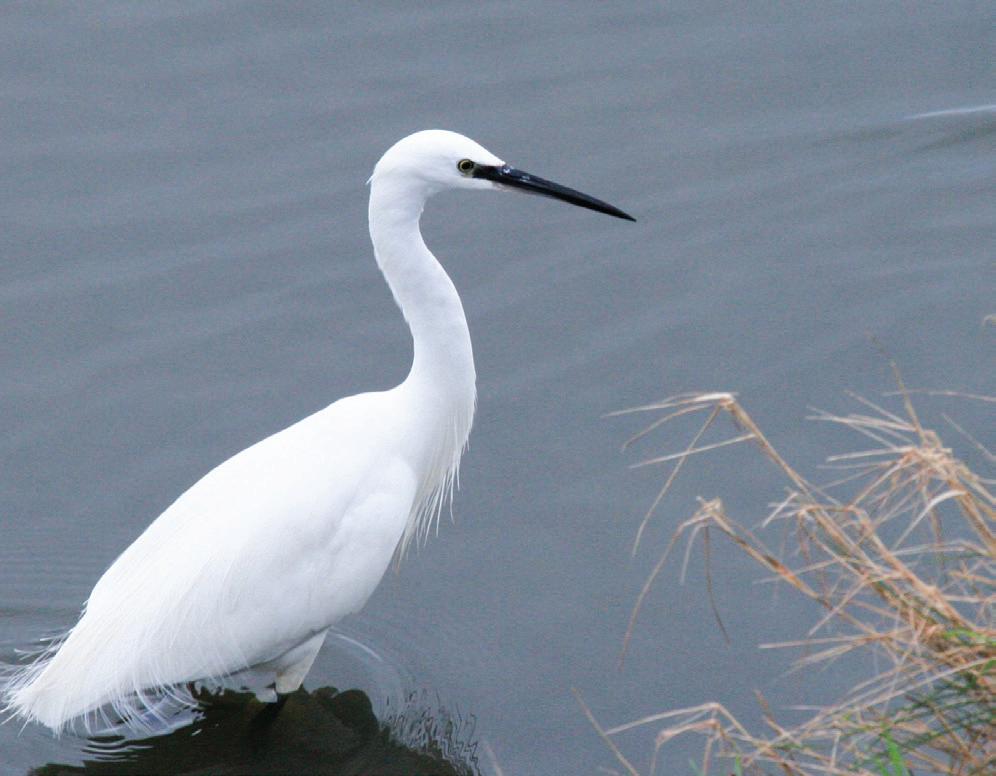
3 minute read
NOTES FROM THE SOUTH EAST & WEST
Notes
NOTES From...
SOUTHEAST
Birds of a feather… Winter on the Wexford Wildfowl Reserve
The Wexford Wildfowl Reserve is one of the most important sites in Europe for the Greenland white-fronted goose. This increasingly scarce goose species has been found on the reserve since 1910 and from then on, numbers began to rise. The reserve is also a key site for wintering species, such as whooper swan, brent geese, black-tailed godwit, and golden plover. On your average visit to the reserve in winter, you will see species which include Eurasian wigeon, teal, snipe, little egret and, if you’re lucky, hen harrier while they hunt the open fields and reedbeds. The National Parks and Wildlife Service and BirdWatch Ireland make sure the geese and swans have fodder beet to graze on in late winter. When the birds first arrive, they feed mainly on the managed grassland. Species of geese that are found regularly on the reserve during the winter months include Greenland white-fronted, lightbellied brent, barnacle, and small numbers of pink-footed.
When visiting the reserve, there are four bird hides. One is the Pat Walsh, which is the first viewing point you will come upon. This hide views an open channel, which is a great site for wintering goldeneye, tufted duck and water rail. The Pat Walsh channel is well known for rare species, including ringnecked duck, common crane and long-billed dowitcher.
The second hide provides nice views out over Wexford harbour, giving the opportunity to see species such as the red-breasted merganser, great crested grebe and great northern divers. Some of the rarer species that have been recorded include red-necked grebe, Slavonian (found regularly each winter in the harbour), black-necked grebe and black-throated diver.
The observation tower offers great views from a height over the reserve. This hide is the best for viewing the thousands of wintering geese and swans. Views into the harbour are also excellent from here. This is the best site on the reserve to see the rare bewick’s swan, mainly in January and February, when the beet field below the observation tower is ready for the birds to feed on.
The Bewick’s swan is a vagrant from Siberia. Up to around 20 birds now winter on the reserve most years. This number has decreased by a staggering percentage over the years, but in recent years, the reserve used to hold anything up to 80 to 100 Bewick’s swans.
The brent goose is a species that also arrives in its hundreds to the reserve, using the large areas of open grassland to feed on. This small goose species is a migrant from Arctic Greenland and Canada each winter. While scanning through the flocks from the observation tower, it is worth keeping your eyes peeled for the scarcer dark-bellied brent, which is a vagrant from Arctic Siberia. And if you are really lucky scanning the flocks, you may come across the North American brent goose, known as the black brant.
Little egret feeding in the pools below the observation tower
SOUTHWEST
CAN WE COMBAT ECOCIDE? BY JULIE HARDING
We throw away our food shopping, and dump fastfashion clothes. We power homes with gas and oil, but we all already know.
Sustainability’s the ticket. Finally it’s cool and quite trendy to care about the planet and be “environmentally friendly”.
We need green space to walk, clean air to breathe for health and happiness. Our GGEs are off the charts – too many cows’ belches and farts! We must reduce this mess.
Intensive farming has got to go, the BRIDE project’s reviving lost hedgerows. Farmers want to do what’s right to take care of the land. They’ll use the Internet of things. Grow grass instead, be grand.
The sea will rise by two whole feet in the next eightyone years. All hands on deck or we’re overboard, these aren’t imaginary fears.
Don’t put food waste in the rubbish bin, rethink your transport type. Be creative, grow some vegetables, eat less meat, believe the hype.
The whole world’s man-made problem must be solved by feminists. So says my idol Mary Robinson. After all, the aim is to coexist.
From Dingle to Kinsale you’ll find. Innovative hubs and anti-plastic towns, Tipperary’s eco-village, as amazing as it sounds. Communities are rising up to take some control back. Politicians don’t work fast enough – everyone must lead the pack!










